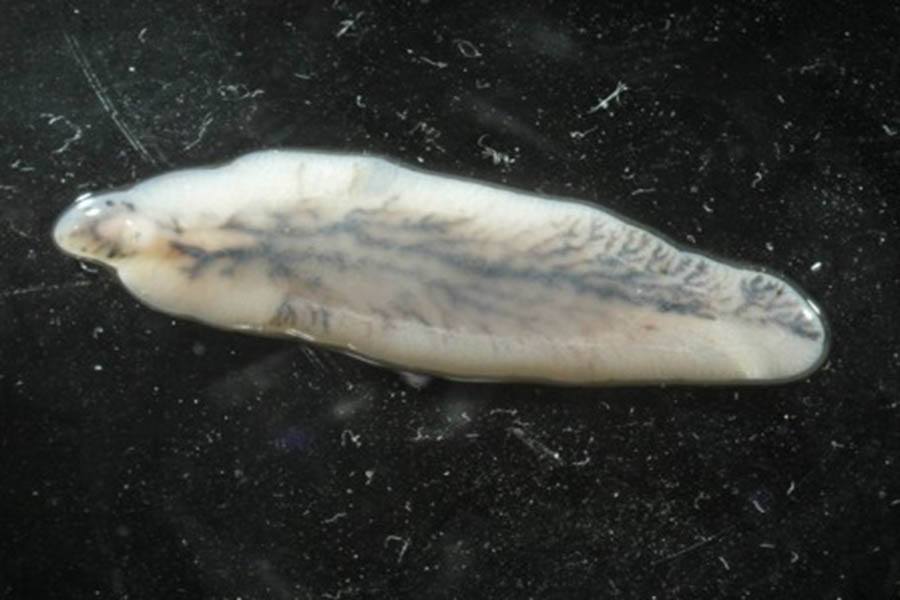Parasites In Humans: Liver Fluke (Fasciola and Clonorchis sinensis)

Wikimedia Commons
These slimy flatworms enter the human body through contaminated water or freshwater plants, like watercress. The parasite then migrates from the intestine through the abdominal cavity and into the liver, where it attaches to the host’s bile ducts.
In return, the host gets severe pain, jaundice, and liver infections — and for a while. Indeed, the worm can live in the liver for 20 to 30 years.
Worse still, these kinds of parasites are fairly common. The Chinese liver fluke, for one, affects 30 million people in Asia. It’s transmitted when humans consume worm-infected fish. Once it takes up residence in the liver, it produces eggs every 30 seconds, and has been known to cause cancer in the bile ducts of the liver.
Hookworm (Ancylostoma duodenale and Necator americanus)
Hookworms are voracious bloodsuckers — so much so that they can cause intestinal inflammation and severe anemia from sucking on the host’s intestinal walls.
What’s even worse is how they get inside the host in the first place. In the words of parasitologist Norman Stoll, these “silent and insidious” creatures generally infect people who walk barefoot in areas contaminated by fecal matter. The larvae penetrate the skin of the foot, and then migrate through the lungs into the trachea, where the host swallows them. Once they pass into the digestive system, the larvae mature into adult worms.
The worms then mate in the intestine; female hookworms can lay up to 30,000 eggs a day, which are all passed when the host goes to the bathroom. Because the worms take five to seven weeks to mature, early diagnosis can be difficult as no eggs can be found in a patient’s stool.
After those early stages, hookworm infections can last up to five years. Though it’s easy to treat an infection once it’s diagnosed, Stoll seems right on the money in calling these parasites “evil.”
Now that you’ve made it through reading about these six human parasites, read about the five scariest diseases found on the New York City subway. Then, learn about five of the weirdest diseases that can attack the human body.





